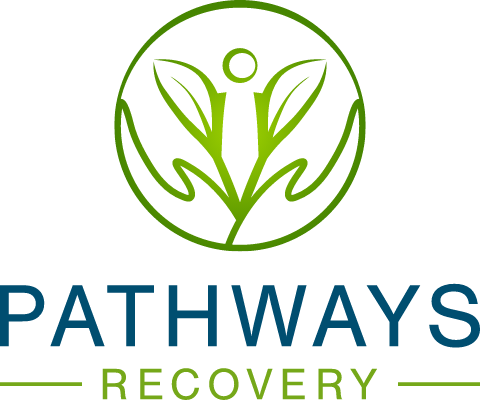This Is What Fentanyl Addiction Looks Like
Dealing with chronic pain or recovering from surgery can be challenging. Thankfully, modern medicine has given us many options that can help make living with pain a little easier and more manageable.
There are a great deal of pain medications on the market. Some of these medications are over-the-counter and some are more potent, tightly regulated, and only available through a prescription. Prescription painkillers can carry a bad reputation as they are sometimes linked with harrowing stories of addiction.
Fentanyl is just one prescription opioid pain medication that can be used. While it is true that fentanyl, like other opioid painkillers, is not exempt from any misuse, the fact still remains that many opioid pain relievers are very helpful when used in the right situations under proper supervision.
No matter how you started using fentanyl, at Pathways Recovery we recognize that substance misuse is a complex condition. That’s why we approach treatment from a holistic perspective, diving beneath the surface of addiction and beginning the healing from within.
Recovery from fentanyl addiction is possible, no matter what your history with the drug looks like. All it takes to get started with your life-changing treatment is an open mind, some determination, and our team’s support and compassion.
What Is Fentanyl?
Fentanyl is a very strong synthetic opioid drug that can be legally prescribed for pain management. According to the Centers for Disease Control and Prevention (CDC), this drug “is 50 to 100 times more potent than morphine.”
In recent years, the country has seen an increase in fentanyl overdoses. Although some fentanyl misuse and grave consequences such as an overdose can happen while using legally prescribed medication, the CDC reports that more recent cases of overdose are linked to illegally manufactured fentanyl. Some licit manufacturing channels can also have their product diverted to illicit sources that will then distribute fentanyl specifically for misuse.
As the opioid crisis continues to make news headlines, fentanyl has become increasingly mentioned in conversations relating to opioid misuse. According to the CDC, rates of overdose deaths that involved synthetic opioids (excluding methadone) rose 16% in just one year, from 2018-19. In addition, “more than 36,000 people died from overdoses involving synthetic opioids in 2019.”
But what exactly is an opioid?

What Are Opioids?
Opioids are a specific classification of drug. Many opioids cause similar effects in a user, typically focusing around pain relief. Other kinds of opioids include substances such as oxycodone, hydrocodone, codeine, and morphine. Some of these drugs, as you might have noticed, are legally prescribed to help patients deal with pain, just like fentanyl.
The majority of opioid overdoses involve synthetic opioids, as the CDC reports. Synthetic opioids like fentanyl are entirely lab manufactured and are different from some natural or non-synthetic opioids, such as morphine or codeine. Non-synthetic or natural opioids can be created by extracting the naturally found chemicals and refining them.
Synthetic opioids, meanwhile, are commonly cut with other kinds of drugs. Popular choices for cutting agents include heroin and cocaine. Because synthetic opioids are such powerful substances, accidentally overdosing is sadly a common occurrence. The potency of these drugs cannot be understated and contributes greatly to the rising statistics about opioid overdose deaths.
Side Effects of Fentanyl
Like any substance, even when used properly, fentanyl can cause a person to experience some side effects. However, when it comes to using this potent drug at unprescribed levels, side effects can be more drastic and even put an individual’s health in danger.
As an opioid, fentanyl can be used in pain management for chronic or severe pain, such as late-stage cancer pain. The pain management quality of this substance can induce feelings of intense relaxation or euphoria. These effects can be exhilarating, especially when fentanyl is taken at doses that are higher than prescribed in order to achieve these desired effects.
Although feelings of euphoria are some of the most expected side effects of fentanyl misuse, there are plenty of potential side effects:
- Euphoria
- Slow breathing
- Headaches
- Trouble concentrating
- Seizures
- Blurry vision
- Constipation
- Nausea/vomiting
- Drowsiness
- Itching
- Physical weakness
- Stiff muscles
- Constricted pupils
- Sweating
- Dry mouth
- Slow heartbeat
Different Forms of Fentanyl
Fentanyl also comes in a variety of different forms. When given as a prescription, some forms of the drug are better suited for certain patients and situations than others:
Actiq®: This is fentanyl in a lozenge form that is on one end of a plastic stick. It’s held under the tongue, similar to a lollipop. It is typically used to help manage pain in patients who are already making use of other pain medications and have built up tolerance to opioid therapy.
Abstral®: Like Actiq, Abstral is also used in treatment of patients who are tolerant to other opioid treatment. This kind of fentanyl is a quick-dissolve tablet that is placed under the tongue.
Onsolis®: Onsolis is used to treat patients who have a great need for pain management but are tolerant to other opioids. Onsolis takes the form of a small film that is placed in the mouth, sticks to the cheek, and dissolves over a period of 15 to 30 minutes.
Fentora®: In a continuous theme with other forms of fentanyl, Fentora is also used to treat opioid-tolerant patients.

Duragesic®: Unsurprisingly, Duragesic is used in treatment of patients with a consistent need for pain management who are not adequately supported through other medications. Duragesic is a transdermal patch that a patient will simply wear on the skin. The patch works through time-release and is not very effective at inducing a high.
The variety of forms of fentanyl also means that there is greater diversity in the side effects of this drug. For example, the transdermal patch can irritate the skin and cause redness or a rash. However, it’s important to note that individuals who intentionally misuse fentanyl as a means of achieving a euphoric or otherwise desired state don’t use some forms — like the fentanyl patch — as often.
Directly injecting fentanyl is a faster and more effective way of achieving a high, instead of relying on the patch’s time-release method. If a patch is used, one could attempt to extract the gel or liquid form of the drug and then proceed to inject it. Time-release drugs are not as effective at helping someone achieve a high since the dispersion of the fentanyl is done gradually and not all at once.
You might also notice that all of fentanyl’s different forms are intended to treat patients who already have an existing tolerance to opioids. This is one of the hallmarks of licit fentanyl use. Because the drug is so incredibly strong, it can still affect individuals who have tolerance to other strong pain medication.
This is also what makes fentanyl so dangerous. If someone with little or no opioid tolerance begins using fentanyl, overdose is likely. Along the same lines, once someone has developed a tolerance to fentanyl through continued misuse, more of the drug will be needed to achieve the same desired effect. By continuing to up the dose, an overdose becomes increasingly likely.
The Effects Of Continued Fentanyl Misuse
People who find themselves continuing to turn to recreational fentanyl use in order to achieve those euphoric effects or intense relaxation can find themselves addicted to the drug as they continue to chase those feelings.
Fentanyl dependence can even occur in an individual who is taking the prescribed medication under a doctor’s supervision. The potency of fentanyl plays a large role in its continued misuse. When a patient needs to stop using fentanyl, a doctor will usually slowly taper the dose down in order to prevent withdrawal symptoms and make the experience more comfortable.
Since even a properly supervised patient can experience dependence and withdrawal, it should come as no surprise that people who use fentanyl recreationally can also become addicted.
One of the main concerns with illicit fentanyl use is the high risk of overdose. According to the National Institute on Drug Abuse, “When people overdose on fentanyl, their breathing can slow or stop.” This decreased breathing can also decrease the levels of oxygen that reach the brain. This lack of oxygen to sustain important bodily functions is called hypoxia. Unless treated quickly, hypoxia can lead to brain damage, a coma, or death.
Signs Of Fentanyl Addiction
Fentanyl addiction can be identified through withdrawal symptoms that an individual can experience if they stop taking the drug.
Common fentanyl withdrawal symptoms include
- Muscle and bone pain
- Severe cravings for the substance
- Uncontrolled leg movements
- Cold flashes and goosebumps
- Diarrhea
- Trouble sleeping
- Vomiting
- Sweating
- Anxiety
- Pupil dilation
Addiction can also be identified through behavior. For example, if your attempt to quit the drug has repeatedly failed, even though you really want to stop using, you could be addicted. Addiction is also characterized by continuing to use fentanyl, even though your health and personal life are suffering a great deal because of it. Continuing to use even when there are numerous negative consequences is one of the hallmarks of addiction.
Stockpiling the drug and spending less time with friends or pursuing hobbies and interests in order to spend more time using is also a common symptom of addiction.
But keep in mind that no matter where your journey with fentanyl began or what it looks like today, recovery is possible.
Here at Pathways Recovery in Sacramento, we know that fentanyl addiction is a serious condition that can deeply impact the lives of so many people as well as their family and friends. Our holistic approach to healing treats each client in our program with the respect and compassion they deserve. We tackle addiction from the inside out, challenging our clients to make a journey of personal growth. Call (916) 735-8377 to begin healing today.
Frequently Asked Questions
How do you treat fentanyl addiction?
We offer fentanyl addiction treatment through group and individual therapy sessions each week. We employ techniques such as cognitive behavioral therapy (CBT) and dialectical behavior therapy (DBT). We also support the use of medication-assisted treatment, nutritional supplements, and physical fitness.
What are recovery statistics for fentanyl addiction?
Pinning down exact recovery statistics for fentanyl addiction can be difficult since these kinds of statistics are not always closely tallied. Although we might be able to give an exact number, we can confidently tell you that fentanyl addiction recovery — and recovery from any addiction for that matter — is possible.
Proper treatment programs go a long way in supporting long-term, successful recoveries. At Pathways Recovery in Sacramento, we’re ready to help you achieve your recovery goals.

